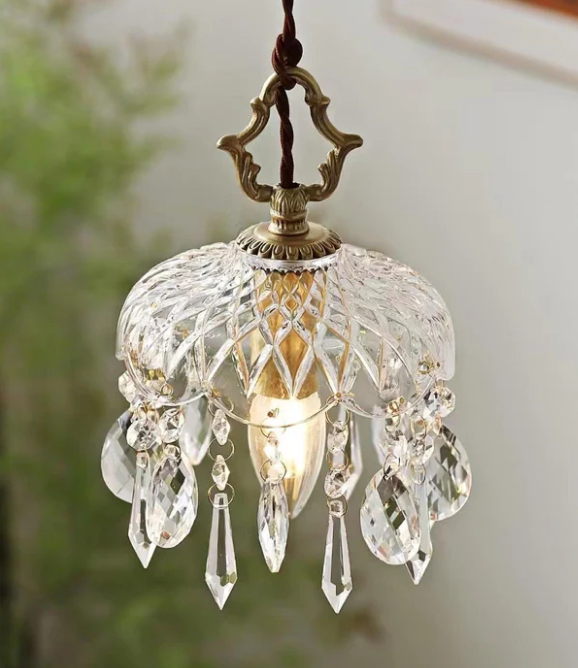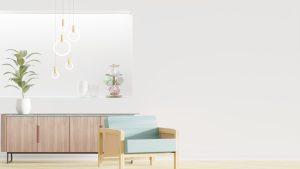Lighting Akapearls design is an essential aspect of creating a comfortable and functional space. It not only provides illumination but also plays a crucial role in setting the mood and ambiance of a room. Whether it’s a cozy living room, a productive workspace, or a relaxing bedroom, the right lighting design can transform any space into a welcoming and inviting environment. In this article, we will explore the importance of lighting design in creating atmosphere, understanding the basics of lighting design, choosing the right lighting fixtures for your space, maximizing natural light, the role of color temperature, creating drama with accent lighting, balancing task and ambient lighting, incorporating dimmer switches for versatility, the impact of lighting on mood and well-being, and tips for achieving the perfect lighting design in any space.
The Importance of Lighting Design in Creating Atmosphere
Lighting has a significant impact on the mood and ambiance of a space. It can make a room feel warm and inviting or cold and sterile. By carefully selecting the right lighting fixtures and using them strategically, you can create the desired atmosphere in any room. For example, soft and warm lighting can create a cozy and intimate ambiance in a living room or bedroom, while bright and cool lighting can make a workspace feel energizing and productive.
In addition to setting the mood, lighting design also plays a crucial role in highlighting architectural features or focal points in a room. By using accent lighting techniques such as spotlights or wall washers, you can draw attention to specific areas or objects, creating visual interest and adding depth to the space.
Understanding the Basics of Lighting Design
To create an effective lighting design, it is important to understand the different types of lighting and their purposes. There are three main types of lighting: ambient, task, and accent.
Ambient lighting provides overall illumination to a space. It is usually achieved through ceiling-mounted fixtures such as chandeliers or recessed lights. Ambient lighting should be evenly distributed throughout the room to ensure a comfortable and well-lit environment.
Task lighting, as the name suggests, is used to provide focused illumination for specific tasks. It is commonly used in areas such as kitchens, offices, or reading nooks. Task lighting can be achieved through desk lamps, under-cabinet lights, or pendant lights.
Accent lighting is used to highlight specific areas or objects in a room. It adds depth and visual interest to the space. Accent lighting can be achieved through spotlights, uplights, or wall washers. It is important to use accent lighting sparingly and strategically to avoid overwhelming the space.
In addition to understanding the different types of lighting, it is also important to consider layering lighting in your design. Layering involves using a combination of ambient, task, and accent lighting to create a balanced and visually appealing environment. By layering lighting, you can create depth and dimension in a space while also providing the necessary illumination for different activities.
Choosing the Right Lighting Fixtures for Your Space
When choosing lighting fixtures for your space, there are several factors to consider. First, consider the size of the room and the height of the ceiling. A large room with high ceilings may require larger fixtures to provide adequate illumination, while a small room with low ceilings may benefit from smaller fixtures that do not overwhelm the space.
Second, consider the style of the room and the overall design aesthetic. Lighting fixtures should complement the existing decor and enhance the overall ambiance of the space. For example, a modern and minimalist room may benefit from sleek and simple fixtures, while a traditional or rustic room may require more ornate or vintage-inspired fixtures.
Third, consider the function of the lighting fixture. Different spaces require different types of lighting fixtures. For example, a dining room may benefit from a statement chandelier that provides both ambient and accent lighting, while a bathroom may require vanity lights that provide focused illumination for grooming tasks.
There are a wide variety of lighting fixtures available, each with its own unique style and function. Chandeliers are often used as statement pieces in dining rooms or entryways. Pendants are versatile fixtures that can be used in a variety of spaces, such as kitchens or living rooms. Sconces are wall-mounted fixtures that can provide both ambient and task lighting. By carefully selecting the right lighting fixtures for your space, you can enhance the overall design and functionality of the room.
Maximizing Natural Light in Your Design
Natural light is a valuable resource that can greatly enhance the design of a space. It not only provides illumination but also creates a sense of openness and connection to the outdoors. Maximizing natural light in your design can make a room feel brighter, more spacious, and more inviting.
There are several benefits to incorporating natural light into your design. First, natural light is known to improve mood and well-being. Exposure to natural light has been shown to increase productivity, reduce stress, and improve overall mental health. By maximizing natural light in your design, you can create a healthier and more enjoyable environment.
Second, natural light can help reduce energy consumption. By relying on natural light during the day, you can reduce the need for artificial lighting and lower your energy bills. This is not only beneficial for the environment but also for your wallet.
To maximize natural light in your design, consider the placement and size of windows in the space. Large windows or glass doors can bring in ample natural light and create a seamless connection between indoor and outdoor spaces. Additionally, consider using light-colored or reflective surfaces such as mirrors or light-colored paint to bounce natural light around the room.
The Role of Color Temperature in Lighting Design
Color temperature refers to the warmth or coolness of light emitted by a lighting fixture. It is measured in Kelvin (K) and can greatly affect the mood and ambiance of a space. Warm color temperatures (around 2700K to 3000K) create a cozy and intimate ambiance, while cool color temperatures (around 5000K to 6500K) create a bright and energizing atmosphere.
When choosing lighting fixtures, consider the desired mood and ambiance of the space. For example, a bedroom or living room may benefit from warm color temperatures to create a relaxing and cozy environment, while a workspace or kitchen may require cool color temperatures to promote productivity and alertness.
It is also important to consider the color temperature of natural light in the space. Natural light varies throughout the day, with cooler temperatures in the morning and warmer temperatures in the evening. By matching the color temperature of artificial lighting to natural light, you can create a seamless and harmonious environment.
Creating Drama with Accent Lighting
Accent lighting is a powerful tool that can be used to create drama and visual interest in a space. It involves highlighting specific areas or objects to draw attention and add depth to the room. By strategically placing accent lighting fixtures, you can create focal points and enhance the overall design of the space.
There are several types of accent lighting that can be used to create drama. Spotlights are often used to highlight artwork or architectural features. Uplights can be used to graze walls or highlight textured surfaces. Wall washers can be used to evenly illuminate large areas or create a soft glow.
When using accent lighting, it is important to use it sparingly and strategically. Too much accent lighting can overwhelm the space and detract from the overall design. By carefully selecting the areas or objects to highlight, you can create a visually appealing environment that captures attention and creates a sense of drama.
Balancing Task and Ambient Lighting
Balancing task and ambient lighting is essential for creating a functional and comfortable space. Task lighting provides focused illumination for specific activities, while ambient lighting provides overall illumination for the entire room. By achieving a balance between the two, you can create a well-lit environment that meets both functional and aesthetic needs.
To achieve a balance between task and ambient lighting, consider the specific activities that will take place in the space. For example, a kitchen may require bright task lighting over the countertops and stove for food preparation, while also providing ambient lighting for general illumination. Similarly, a home office may require task lighting at the desk for reading or working, while also providing ambient lighting for the rest of the room.
It is also important to consider the placement of lighting fixtures to achieve a balanced distribution of light. For example, in a living room, consider placing table lamps or floor lamps near seating areas to provide task lighting for reading or conversation, while also using ceiling-mounted fixtures for ambient lighting.
Incorporating Dimmer Switches for Versatility
Dimmer switches are a versatile tool that can greatly enhance the functionality and ambiance of a space. They allow you to adjust the brightness of lighting fixtures to create different moods and accommodate different activities. By incorporating dimmer switches into your design, you can add versatility and flexibility to any room.
There are several benefits to using dimmer switches. First, they allow you to control the amount of light in a space. This is particularly useful in areas such as bedrooms or living rooms where you may want to create a cozy and intimate ambiance in the evening or a bright and energizing atmosphere during the day.
Second, dimmer switches can help reduce energy consumption. By dimming the lights when full brightness is not necessary, you can save energy and lower your electricity bills. This is not only beneficial for the environment but also for your wallet.
When incorporating dimmer switches into your design, consider the specific activities that will take place in the space. For example, in a dining room, dimmer switches can be used to create a romantic and intimate ambiance during dinner parties, while also providing brighter lighting for everyday meals or activities.
The Impact of Lighting on Mood and Well-being
Lighting has a significant impact on mood and well-being. It can affect our emotions, energy levels, and overall sense of well-being. By carefully selecting the right lighting fixtures and using them strategically, you can create a space that promotes relaxation, productivity, or any desired mood.
Warm and soft lighting can create a cozy and intimate ambiance that promotes relaxation and comfort. This is particularly beneficial in areas such as bedrooms or living rooms where you may want to unwind and de-stress. On the other hand, bright and cool lighting can create an energizing and stimulating atmosphere that promotes productivity and alertness. This is useful in areas such as home offices or kitchens where you may need to focus and stay alert.
In addition to the color temperature of light, the intensity and direction of light can also affect mood and well-being. Soft and diffused lighting can create a calming and soothing environment, while bright and direct lighting can create a sense of energy and vitality.
By understanding the impact of lighting on mood and well-being, you can use lighting design as a tool to create a space that supports your emotional and physical needs.
Tips for Achieving the Perfect Lighting Design in Any Space
To achieve the perfect lighting design in any space, consider the following tips:
1. Understand the purpose of each type of lighting (ambient, task, accent) and use them strategically to create the desired mood and functionality.
2. Layer lighting by using a combination of ambient, task, and accent lighting to create depth and dimension in the space.
3. Consider the size, style, and function of lighting fixtures when choosing them for your space.
4. Maximize natural light by incorporating large windows or glass doors into your design.
5. Use light-colored or reflective surfaces to bounce natural light around the room.
6. Consider the color temperature of lighting fixtures and match them to the desired mood and ambiance of the space.
7. Use accent lighting sparingly and strategically to create focal points and visual interest.
8. Achieve a balance between task and ambient lighting by considering the specific activities that will take place in the space.
9. Incorporate dimmer switches to add versatility and flexibility to your design.
10. Understand the impact of lighting on mood and well-being and use lighting design as a tool to create a space that supports your emotional and physical needs.
In conclusion, lighting design is an essential aspect of creating a comfortable and functional space. It not only provides illumination but also plays a crucial role in setting the mood and ambiance of a room. By understanding the basics of lighting design, choosing the right lighting fixtures, maximizing natural light, considering color temperature, creating drama with accent lighting, balancing task and ambient lighting, incorporating dimmer switches, and understanding the impact of lighting on mood and well-being, you can achieve the perfect lighting design in any space. So go ahead, experiment with lighting in your own spaces, and create an environment that is both comfortable and functional.


